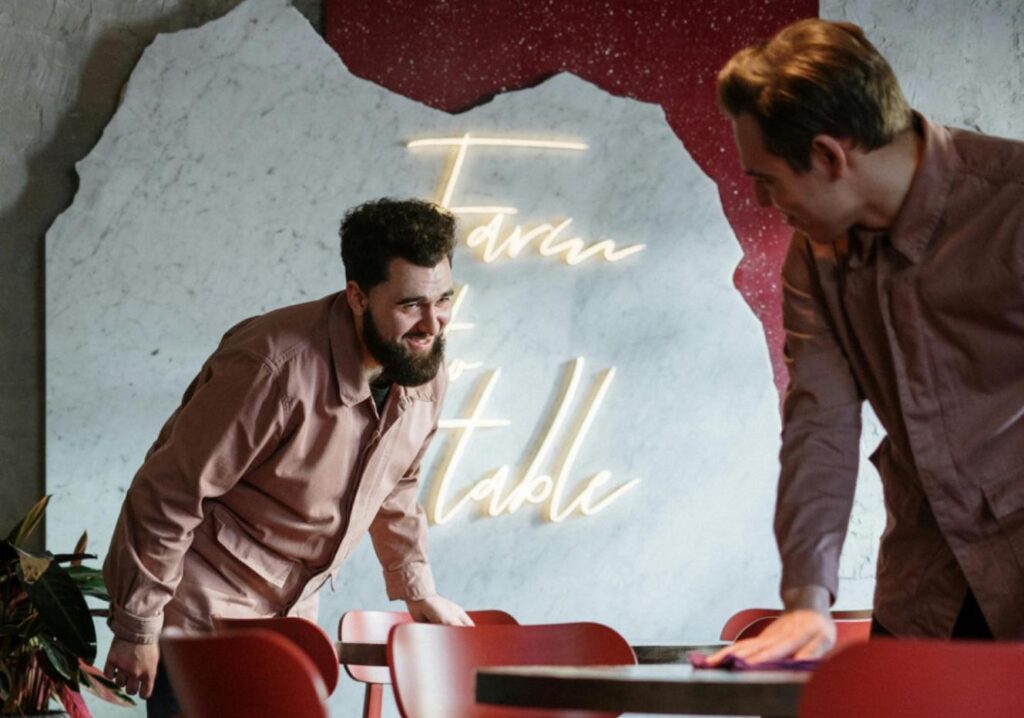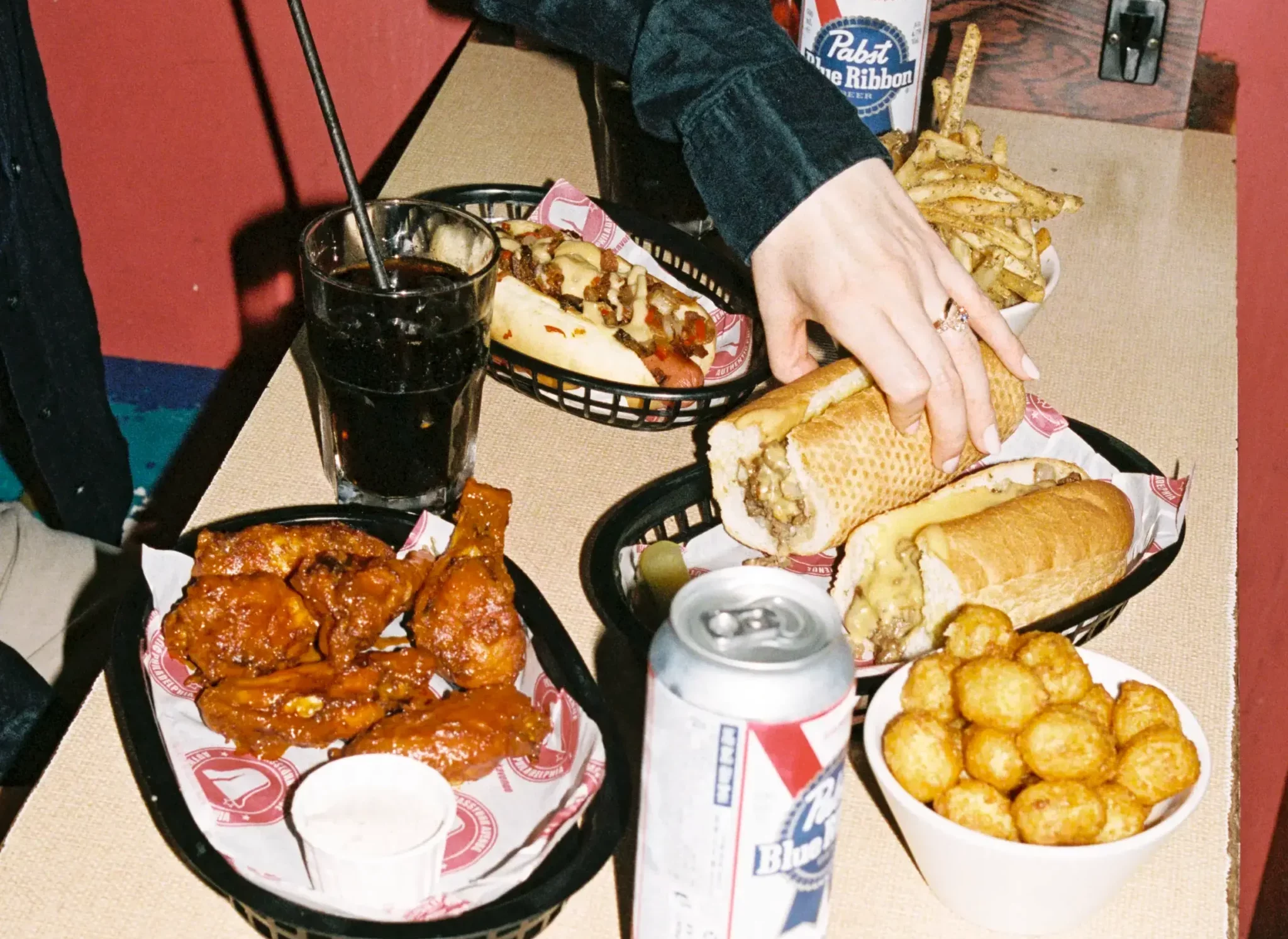Trimming food costs is one of the best ways to boost your profit margins. You spend less on ingredient costs, and keep your gross profits looking healthy!
But bringing food costs down is easier said than done, especially in the current climate with costs on the rise left, right, and centre.
So what’s the solution?
There’s no straightforward answer to this question, but there are some tactics you can implement to head in the right direction. In this article, we’ll walk you through five strategies to minimise food costs (even in the turbulent time the industry is facing).
But first, let’s clarify what restaurant food costs are.
What are restaurant food costs?
Simply put, restaurant food cost is the total cost you spend on food after considering external costs (such as wages or rent) and implicit costs (the time spent preparing the food). It helps restaurant operators figure out how much money they make on the sale of each dish, compared with how much it costs to actually make the dish.
It’s also a variable food cost, meaning that it can change from month to month (unlike fixed costs, like rent, which generally stay the same over a long period). Because of this, it’s important to track food costs closely. If things change, you need to be on top of it to ensure you remain profitable.
What is the food cost formula?
Food cost is usually represented as a percentage, known as the food cost percentage. This percentage represents the portion of money spent on buying food and drink supplies at your restaurant.
Here’s how the formula works:
(Total cost of goods sold / Total food sales) x 100 = Total food cost percentage

What is an example of the food cost percentage formula?
Imagine that your total cost of goods sold (COGS) is £5,000. You made £7,500 in food sales, so your food cost percentage is 66.6%. That’s a pretty high food cost percentage, which isn’t ideal.
However, if the £5,000 produced £15,000 in food sales, that’s a different story. That’s a 33.3% food cost percentage, which is much better for business!
How do you use the food cost percentage formula?
There are a couple of ways to use this formula:
- Food cost percentage for each dish. This involves using the formula to work out the cost percentage of each menu item. This can be helpful when auditing your menu to identify the most profitable dishes, as well as the dishes that can be optimised or removed.
- Total food cost percentage. This is a top-level metric that looks at the total cost of all your food supplies compared to total food sales within a certain accounting period. It’s a great way to set benchmarks for your restaurant, giving you a better idea of the bigger picture.
5 strategies to trim your food costs and boost your profit margins
Now that we know the ins and outs of calculating your food costs, let’s look at some of the ways you can bring these costs down to make your margins go up! 📈
1. Set an ideal food cost percentage
The first step in trimming food costs is figuring out what your ideal food cost percentage should be. For example, if you’re currently operating at a 50% food cost percentage, you might set a new goal to reduce the percentage to 30% by the end of the next accounting period.
Or if you’re focusing more on specific dishes, you might set a goal to reduce the food cost percentage for your most popular menu items by 10%. It’s totally up to you and what you want to achieve in your restaurant.
Now, we know what you’re thinking. Surely you can reduce costs without creating a goal to work towards?
While this is 100% possible, we wouldn’t recommend it. It becomes much harder to track progress and identify areas of improvement. With goals and KPIs in place, you can be sure you’re heading in the right direction and monitor specific elements of food costing to achieve your goal.
2. Engineer your menu
Menu engineering is a way to optimise your menu pricing based on historical sales data and food costs. It helps you create a profitable menu based on popularity and profitability, while also enhancing the customer experience.

Here are some examples of menu engineering:
- Strategic positioning. If you know that your classic cheeseburger is the most popular item on your menu, put it front and centre! Highlighting the high-profit and popular items is a great way to encourage more people to keep buying them.
- Higher menu prices for popular items. Your cheeseburger is the winner on your menu, so why not increase the price slightly to boost your margins? It doesn’t have to be a drastic increase, even a small bump will make a difference to your bottom line.
If the thought of menu engineering sounds like a ballache, you’re in luck! You can use technology to take care of this for you.
With Nory, for example, you can pinpoint your top menu items, calculate your food cost percentage, and strategically create your menu to influence customers’ decision-making process and, ultimately, your bottom line.
3. Train your team
Training restaurant staff might seem like a strange tactic to reduce food costs, but bear with us.
When you’re staff have the knowledge and understanding of how to reduce food costs, they can implement these practices into their day-to-day work.
In other words, when they understand the importance of cost control and how their actions impact the bottom line, they become first-hand advocates for cutting costs.

Think about chefs as an example. By training them to manage portion sizes, they use less food. As a result, you spend less on the cost of ingredients and keep your food cost percentage down.
It also applies to other areas of restaurant operations, like making smart purchasing decisions or minimising food waste wherever possible.
4. Negotiate with vendors and suppliers
The majority of your food costs go straight into the pocket of your vendors. So, it only makes sense that you should think about negotiating these prices to reduce your food costs!
Here are some of the ways you can negotiate costs with existing suppliers:
- Seek bulk discounts. Buying in bulk is a great way to bring your food costs down. It’s easier for the vendor because they’re selling more items in one go, and it works out cheaper for you. Although studies are showing that wholesale food costs are rising slightly — just something to be aware of.
- Agree on a long-term partnership. If you sign on to use a specific vendor for a long period, you might be able to wrangle lower prices. They can rely on you to continue buying their produce, so they don’t need to spike prices to cover any quiet periods.
Hot tip 🔥 If there’s no room for negotiation, look elsewhere. Other suppliers may be able to offer a better deal. But remember — cheaper isn’t always better. Be sure you don’t compromise on quality if you do find a supplier with lower prices.
5. Use AI technology to optimise inventory management
One of the most effective ways to trim restaurant costs is by optimising how you order, manage, and store your inventory.
This is where AI technology can help!
With the right technology, you can track your food costs and place orders in line with customer demand. The system will identify peak periods and popular menu items to ensure you stock your kitchen with the ingredients you actually need.
As a result, you can optimise your orders to ensure you have enough food to serve customers, but that you don’t overspend on ingredients that will go to waste. It keeps your costs lower, your food waste to a minimum, and your profit margins healthy.
Nory’s founder and CEO, Conor Sheridan, talks about the importance of AI in hospitality in this article. He says the following:
“One of the key advantages of AI is its ability to analyse vast amounts of data to make accurate predictions. For restaurants, this means predicting customer demand with remarkable precision. Algorithms can crunch historical data, taking into account factors like weather, holidays, and local events, to forecast when and what customers are likely to order.”
Look at Nory as an example. Our restaurant management system analyses historical sales data to accurately predict future demand. You can order ingredients you need, track usage, and ensure you keep your food costs at a minimum.
But don’t just take our word for it. Clean Kitchen uses real-time insights to improve stock management to only order items they need. As a result, they’ve increased gross profits by 4%!
Want to trim your restaurant food costs? Let Nory help
If you’re looking for a streamlined and efficient way to reduce your food costs, why not use Nory? Our restaurant management software will analyse your sales and performance to identify cost-cutting strategies across your business.
Reach out to us and let’s get the ball rolling!
FAQs about restaurant food costs
What’s the average food cost for a restaurant?
On average, food costs are around 28-35% of total operating costs. But remember, this isn’t a one-size-fits-all number. The specific figures vary depending on your restaurant’s size, location, and costing strategy.
How can I reduce food costs without impacting quality?
Reducing food costs doesn’t mean you have to compromise on taste. Smart purchasing, reducing waste, accurate portion control, and savvy use of technology can help keep your costs down and your flavours up!
How does technology help cut food costs?
From inventory management software that keeps track of your stock levels and turnover to food costing software that helps crunch the numbers, technology can be your knight in shining armour in the battle against high food costs.
Take a look at some of our success stories to see how other restaurant owners use technology to improve their bottom line.


